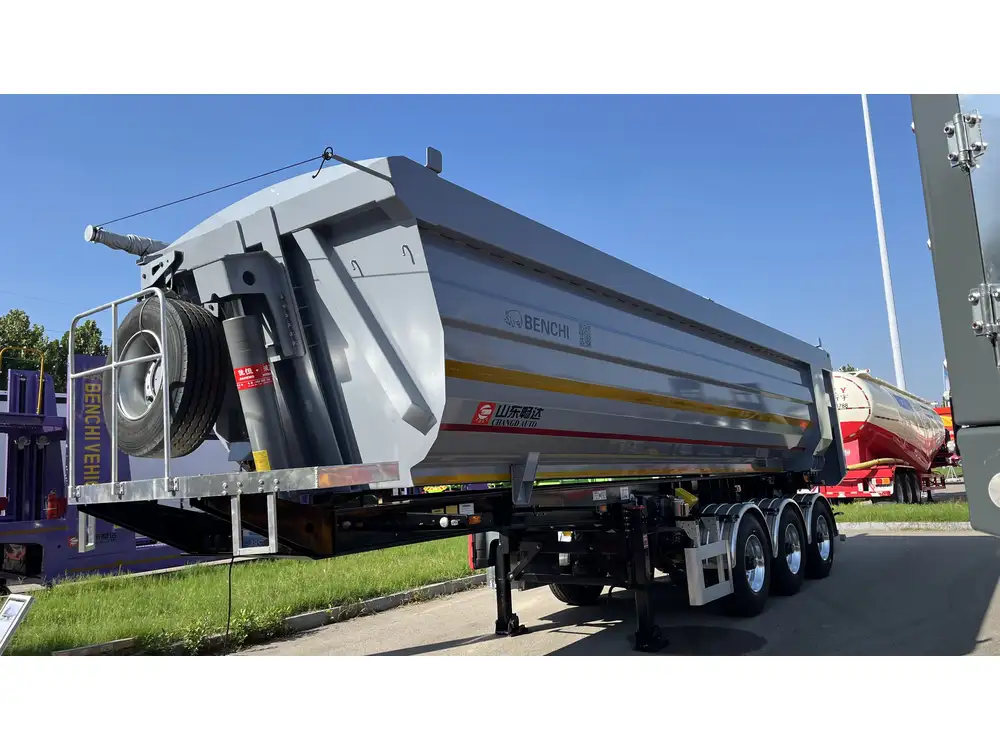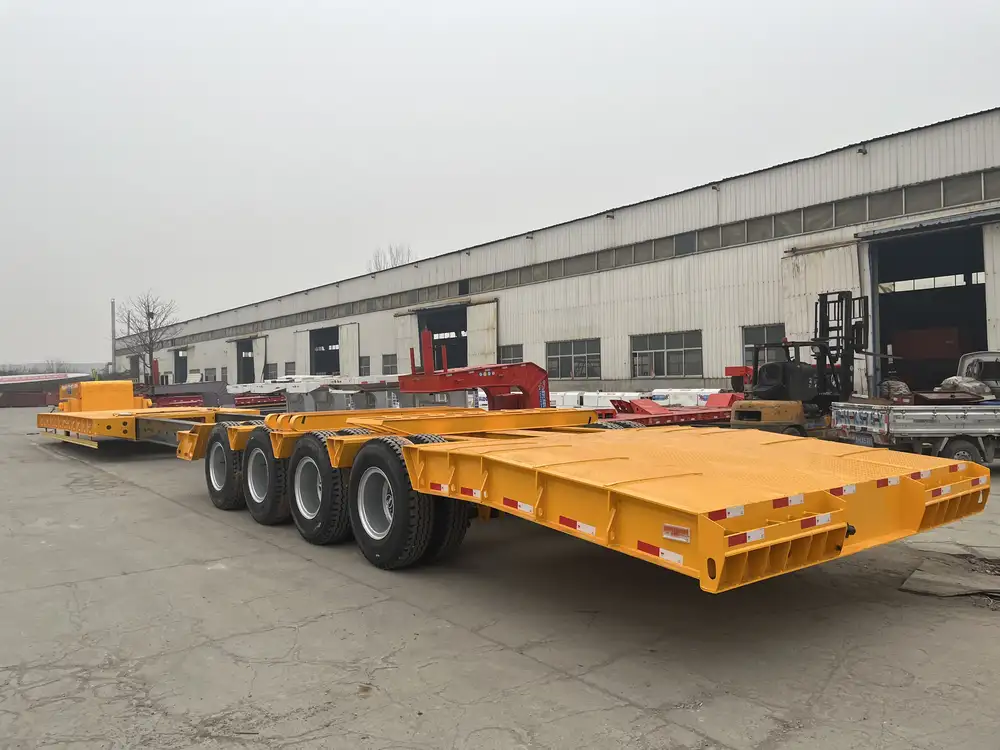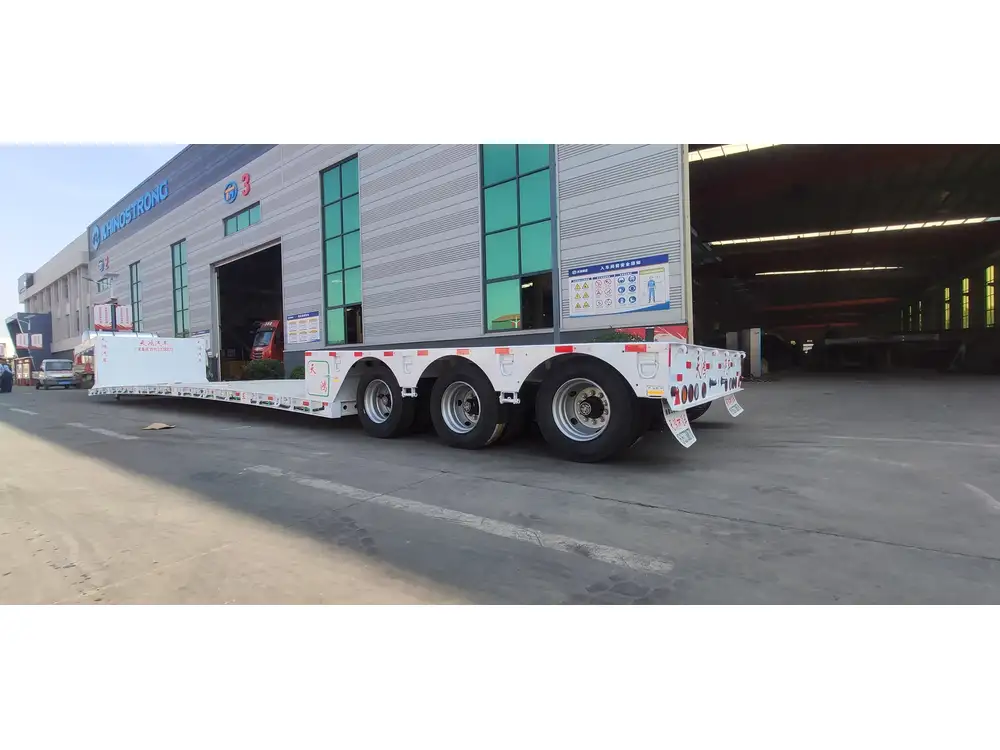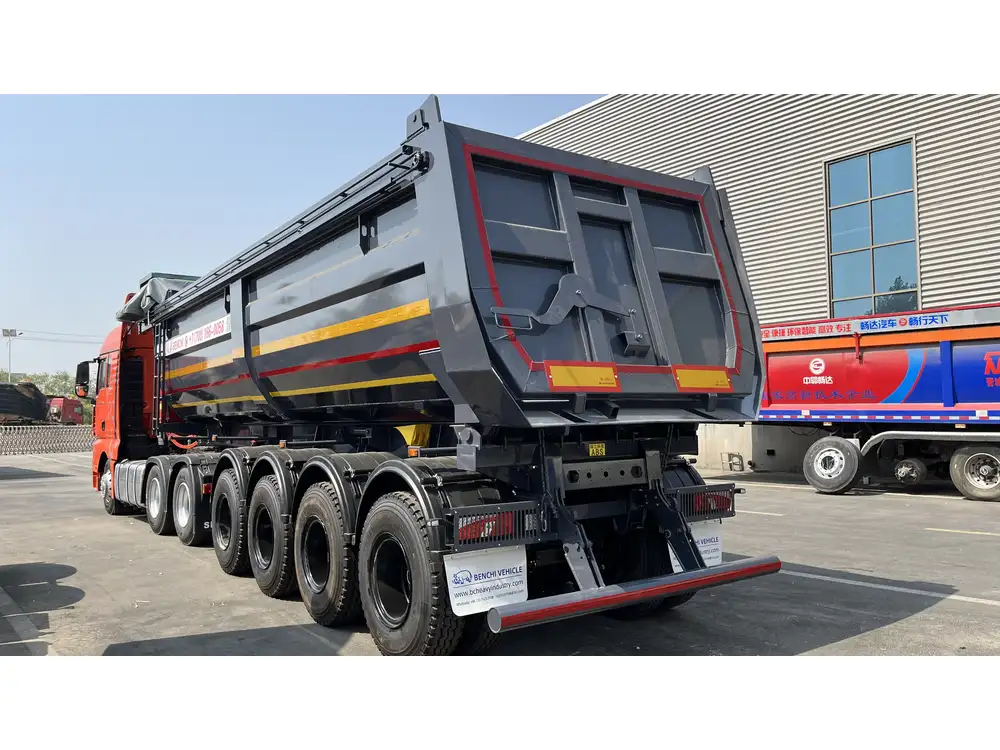The term “heavy machinery” encompasses a wide range of large vehicles and equipment crucial for construction, transportation, and other industrial activities. Semi-trailers, often seen on highways delivering goods across the country, frequently spark questions regarding their classification in the realm of heavy machinery. This article delves into the specifics surrounding semi-trailers, examining their characteristics, legal definitions, and roles in logistics and transportation.
What Is a Semi-Trailer?
A semi-trailer is a type of trailer that is designed to be towed by a truck or tractor unit. Unlike a full trailer, a semi-trailer has wheels only at the rear and relies on the forward-placed truck for support. The design enables semi-trailers to carry substantial loads effectively while being maneuverable on the road.
Types of Semi-Trailers
Semi-trailers come in a variety of types, each suited for specific cargo needs:
| Semi-Trailer Type | Description | Typical Use Case |
|---|---|---|
| Flatbed | A flat, level surface without sides or a roof. | Transporting large or heavy equipment. |
| Dry Van | Enclosed box trailers that protect cargo from elements. | Shipping packaged goods. |
| Reefer | Insulated and refrigerated trailers. | Transporting perishable items. |
| Tanker | Designed for transporting liquids. | Hauling fuel, chemicals, and other liquids. |
| Lowboy | Equipped with a low deck to carry heavy machinery. | Transporting heavy machinery and equipment. |

Heavy Machinery Defined
Heavy machinery typically refers to a category that includes large, powerful vehicles designed for construction, mining, and similar applications. This includes diggers, bulldozers, and cranes—machines intended primarily for construction output or ground leveling tasks.
Is a Semi-Trailer Heavy Machinery?
The classification of semi-trailers within the heavy machinery category requires navigational clarity in terms of definitions and applications. Here, we dissect critical factors that influence their categorization:
Weight and Size Considerations
One of the primary characteristics of heavy machinery is its substantial weight and size. According to the Federal Highway Administration (FHWA), a typical semi-trailer can have a gross vehicle weight rating (GVWR) of up to 80,000 pounds (approximately 36,287 kg). In this realm, semi-trailers indeed exhibit traits characteristic of heavy machinery due to their considerable weight, especially when loaded.

Functionality and Usage
Transport Role: Semi-trailers are predominantly designed for transporting goods rather than operating on construction sites. Their main function involves logistics in the supply chain, moving items from one location to another. Although essential for industry operations, their primary purpose distinguishes them from conventional heavy machinery.
Operational Environment: Semi-trailers are commonly deployed on highways and roads across various terrains. While operating heavy machinery typically involves controlled environments (e.g., construction sites), semi-trailers navigate public roadways. This difference in operational settings further complicates their classification.
Regulatory Perspectives
From a regulatory standpoint, definitions may vary based on jurisdiction and context:
Federal Regulations: The U.S. Department of Transportation (DOT) has specific terms associated with commercial vehicles and their design specifications. Though semi-trailers fall under Commercial Vehicle regulations, they might not be directly classified as “heavy machinery.”
State Definitions: Different states may have varied interpretations of heavy machinery. It’s essential to consult local regulations to understand how semi-trailers are classified in specific areas.
Conclusion on Classification
Given these examination points, it can be concluded that while semi-trailers possess comparable weight metrics to heavy machinery, their primary role in transportation, rather than operation, often relegates them outside the strict definitions typically ascribed to heavy machinery. Thus, while they operate in similar environments and can be as substantial in weight as many construction machines, semi-trailers are not predominantly deemed heavy machinery by strict definitions.

The Role of Semi-Trailers in Heavy Machinery Transport
A noteworthy facet of semi-trailers is their integral connection to heavy machinery transport. They play a pivotal role in logistics, particularly concerning the transportation of heavy equipment utilized in construction, mining, and agricultural sectors.
Efficient Transport of Heavy Machinery
Lowboy Trailers: Specifically designed for heavy machinery transport, lowboy semi-trailers enable the movement of oversized equipment that exceeds the dimensions of standard semi-trailers. Their unique design permits easy loading and unloading of excavators, bulldozers, and more.
Specialized Equipment: Adapting semi-trailers for heavy machinery requires specialized gear, including ramps and hydraulic systems, which facilitate the seamless transportation of heavy loads.
Safety and Compliance
Transporting heavy machinery via semi-trailers involves strict adherence to safety standards and federal regulations, ensuring that loads remain secure throughout transportation. Here are some safety protocols:
| Safety Protocol | Description |
|---|---|
| Securing Loads | Utilizing chains, straps, or blocking mechanisms to prevent shifting. |
| Weight Distribution | Ensuring even load distribution to maintain road stability. |
| Inspection Requirements | Regular vehicle inspections to comply with DOT standards. |
| Permitting | Acquiring necessary permits for oversized or overweight loads. |

Considerations When Operating Semi-Trailers
Proper operation of semi-trailers requires an understanding of various factors, all aimed at ensuring efficiency and safety. Here are some essential considerations:
Driver Qualifications
Operating a semi-trailer necessitates a valid Commercial Driver’s License (CDL). It’s crucial for operators to be trained adequately, not only in driving but also in load management and road safety regulations.
Maintenance Requirements
Routine maintenance of semi-trailers is essential to prevent breakdowns and ensure safety when transporting heavy loads. Aspects of maintenance include:
- Tire Checks: Regular inspections to ensure tires are in good condition.
- Brakes and Safety Features: Testing these crucial systems to maintain their effectiveness.
- Frame Integrity: Ensuring the frame of the trailer is free of any corrosion or damage.

Route Planning and Legal Considerations
Planning routes ahead of time can significantly impact the efficiency of transporting heavy machinery or goods. Key considerations include:
- Height Restrictions: Knowing bridge heights and overpasses that could impact transport.
- Weight Limits: Adherence to local weight limitations on roads and bridges.
- Traffic Laws: Being familiar with varying regulations that apply across states.
Innovative Trends in Semi-Trailer Technology
The semi-trailer industry continuously evolves, addressing modern demands through advanced technology. Here are some emerging trends:
Advanced Materials
- Lightweight Composites: Utilizing advanced materials allows for a reduction in trailer weight, enabling higher payloads and better fuel efficiency.

Telematics
- Real-Time Tracking: The integration of telematics offers real-time monitoring of load status and location, enhancing logistics and supply chain management.
Eco-Friendly Practices
- Fuel Efficiency Innovations: Developments in aerodynamics and tire technology contribute to fuel savings and reduced emissions in semi-trailer operation.
Conclusion
The classification of semi-trailers as heavy machinery hinges on various nuances, including weight, functionality, and regulatory definitions. While they do share characteristics with heavy machinery, their primary role in logistical operations diverges significantly from traditional heavy machinery applications. Nevertheless, semi-trailers are indispensable in transporting essential industrial equipment and enabling the smooth functioning of various sectors.
By understanding the complexities surrounding semi-trailers, manufacturers, operators, and industry stakeholders can better navigate and optimize their use in logistics and construction. Addressing these multifaceted challenges enhances safety, compliance, and efficiency—vital contributions to an ever-evolving industrial landscape. Whether considered heavy machinery or not, semi-trailers remain crucial to transporting the powerful equipment that drives our industries forward.



